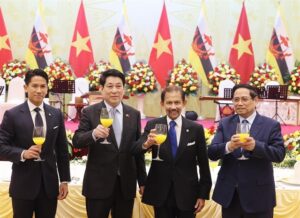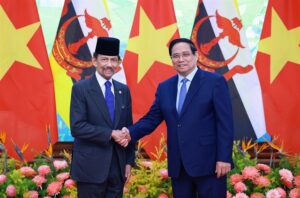Hanoi Sets Ambitious 2035 Target to Eliminate Inner-City Air Pollution

Hanoi, The Gulf Observer: The Hanoi administration has unveiled an ambitious plan to eradicate inner-city air pollution by 2035 through the establishment of low-emission zones and strategic environmental initiatives, as outlined in the draft Political Report for the 18th Congress of the city’s Party Committee.
The draft underscores Hanoi’s commitment to building a green, clean, and civilised capital. Authorities plan to rehabilitate the city’s iconic rivers — including the Tô Lịch, Kim Ngưu, Lừ, and Sét — alongside comprehensive remediation efforts targeting the Nhuệ–Đáy and Cầu Bây–Bắc Hưng Hải river basins.
Wastewater and solid waste management form another key pillar of the city’s strategy. Hà Nội will accelerate the development of sewage collection systems and treatment facilities in Kiến Hưng, Sơn Tây, and Yên Sở to enhance environmental protection and public health.
The city intends to prioritise investments in environmental infrastructure, with new parks that minimise concrete use, urban forests, and “green city” models designed to improve ecological resilience and the urban quality of life.
A comprehensive environmental protection and green development programme with a 15–20 year horizon is also being proposed. This long-term vision includes relocating polluting facilities, hospitals, and schools out of the inner city in accordance with urban planning guidelines.
Vision 2045: A Modern and Culturally Distinct Capital
The draft report outlines Hà Nội’s long-term ambition to become a modern, globally integrated, and culturally unique capital city by 2045. The city aims to achieve a high quality of life, with a projected per capita gross regional domestic product (GRDP) exceeding US$36,000.
By 2030, the city’s Party Committee and political apparatus seek to become a national model of discipline, unity, integrity, and administrative excellence, with a cadre of qualified, ethical, and innovative officials driving development.
Hà Nội will pursue growth through five strategic pillars:
- Culture and People
- Three Key Transformations: Green transition, digital transformation, and circular economy
- Modern, Integrated Infrastructure
- Digital Economy and Smart Urban Governance
- Science, Technology, and Innovation
Strategic Solutions for the Next Five Years
The draft identifies five priority sectors for focused development, with transportation at the forefront. Hà Nội plans to enhance regional connectivity and economic integration through a robust, centrally radiating transport system to ease traffic congestion and promote mobility.
Expansion plans include upgrades to Nội Bài International Airport and the dual-use development of Gia Lâm and Hòa Lạc airports. The city aims to complete all seven ring roads, including the finalisation of Ring Road 4 before 2027 and commencement of Ring Road 5 the same year.
Additionally, authorities plan to complete the northern segment of Ring Road 3 and the connector route to Gia Bình Airport.
The Red River corridor has been identified as a new development axis, with seven major bridge projects — Tứ Liên, Trần Hưng Đạo, Thượng Cát, Hồng Hà, Mễ Sở, Ngọc Hồi, and Vân Phúc — planned to span the river and stimulate regional growth.
Beyond infrastructure, the city will strengthen its cultural, healthcare, and education sectors, while also prioritising IT, digital industry, and biotechnology development. Investment will be channelled into high-tech zones, and longstanding project bottlenecks will be addressed to ensure faster implementation.
With this comprehensive development framework, Hanoi aims to position itself as a leading economic, cultural, and innovation hub not only in Vietnam but across the region, aspiring to join the world’s top 100 most innovative cities.


